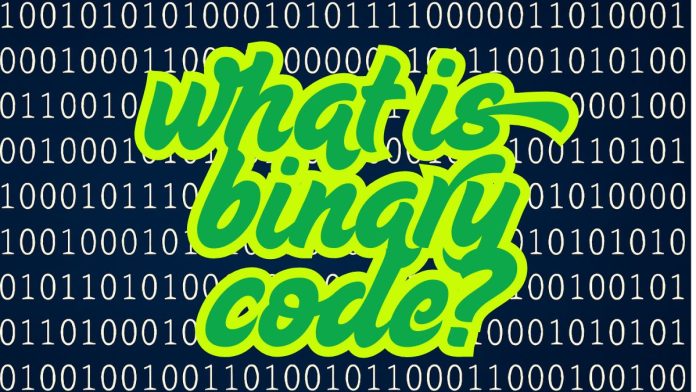Binary code is the fundamental language of computers and digital systems. At its core, binary is a base-2 numeral system that uses only two digits: 0 and 1. Despite its simplicity, binary code is the driving force behind nearly every piece of modern technology—from smartphones and laptops to satellites and artificial intelligence systems. Every instruction processed by a computer, every file stored on a device, and every signal transmitted digitally is ultimately represented in binary.
Understanding binary code is essential to grasp how digital technology operates. Whether you’re a tech enthusiast, a computer science student, or just curious about what happens behind the scenes of your favorite devices, learning how binary works will unlock a deeper appreciation for the digital world. In this article, we’ll break down the basics of binary code, explain how it’s used in computing, and explore its real-world applications.
You don’t need to be a programmer or engineer—just a willingness to explore how the modern world runs on ones and zeros. If you’ve ever wondered how computers “think,” this is the perfect place to start. Let’s dive into the language of machines and decode the binary system from the ground up.
What is Binary Code?
Binary code is a system of representing text, computer processor instructions, or other data using a two-symbol system—typically 0 (zero) and 1 (one). Each digit in binary is known as a bit (short for “binary digit”). Binary code is the language that computers understand because they are built using digital electronic circuits that recognize only two states: on and off.
Each binary digit (bit) corresponds to one of these states:
- 0 = off
- 1 = on
Binary code forms the basis of machine language, which is the lowest-level language understood directly by computers.
Why Binary? The Logic Behind the Simplicity
Computers are made up of billions of tiny electronic switches called transistors. These switches can either be on (allowing current to pass) or off (blocking current). The binary system aligns perfectly with this hardware architecture because it has only two states.
Key Reasons for Using Binary:
- Simplicity in Design: Electronic circuits are easier to design with only two voltage levels.
- Noise Resistance: Binary systems are more resistant to signal degradation over long distances or through interference.
- Cost Efficiency: Fewer components and simpler designs reduce costs.
Using more than two states would significantly increase the complexity of hardware and make systems less reliable.
The History of Binary Code
Although binary is closely associated with modern computers, its conceptual roots stretch back centuries.
Timeline Highlights:
- Ancient China: The I Ching, a classical Chinese text, uses hexagrams built on binary principles.
- 1703: German mathematician Gottfried Wilhelm Leibniz developed the modern binary number system and envisioned it as a universal language.
- 1800s: Mathematician George Boole developed Boolean algebra, laying the groundwork for binary logic.
- 1930s-1940s: Pioneers like Claude Shannon and Alan Turing applied binary logic to electrical circuits and computation theory.
- 1940s-1950s: Binary became the default data representation in digital computers, with early machines like ENIAC and UNIVAC.
How Binary Code Works
Bits and Bytes
- Bit: The smallest unit of data in computing, either 0 or 1.
- Byte: A group of 8 bits, capable of representing 256 unique values (from 0 to 255).
Example:
Binary: 01100001
Decimal: 97
ASCII: 'a'
Binary to Decimal Conversion
Each position in a binary number represents a power of 2, starting from the right (least significant bit).
Example:
Binary number: 1101
- 1×23=81 \times 2^3 = 81×23=8
- 1×22=41 \times 2^2 = 41×22=4
- 0×21=00 \times 2^1 = 00×21=0
- 1×20=11 \times 2^0 = 11×20=1
Total = 8 + 4 + 0 + 1 = 13 (Decimal)
Decimal to Binary Conversion
To convert from decimal to binary, divide the number by 2 and record the remainders.
Example: Convert 13 to binary
- 13 ÷ 2 = 6 remainder 1
- 6 ÷ 2 = 3 remainder 0
- 3 ÷ 2 = 1 remainder 1
- 1 ÷ 2 = 0 remainder 1
Binary = 1101
Binary Arithmetic
Binary arithmetic follows similar rules as decimal arithmetic but simpler.
Addition:
1011 (11 in decimal)
+ 0101 (5 in decimal)
-------
10000 (16 in decimal)
Binary and Computer Architecture
Modern computer architecture is designed around the binary system. Each layer—from hardware to software—depends on binary logic.
Key Components:
- CPU: Executes instructions encoded in binary.
- Memory (RAM): Stores binary data and instructions.
- Storage Devices: Save data in binary formats.
- Bus Systems: Transfer binary signals between components.
Binary instructions known as machine code are executed directly by the CPU. These are grouped into instruction sets, such as x86 or ARM.
Binary and Logic Gates
Logic gates are the physical representation of Boolean logic in hardware, constructed using transistors.
Basic Logic Gates:
- AND: Outputs 1 only if both inputs are 1.
- OR: Outputs 1 if at least one input is 1.
- NOT: Outputs the inverse of the input.
- XOR, NAND, NOR: More complex gates derived from the basic ones.
These gates manipulate binary inputs to produce a binary output, forming the basis of arithmetic operations and decision-making in CPUs.
Binary in Programming
While high-level programming languages (like Python, Java, or C++) allow developers to use human-readable code, everything eventually compiles down to binary.
Examples:
- Compilers translate source code to machine code (binary).
- Assembly Language uses mnemonics but corresponds directly to binary instructions.
- Binary Files: Executables (.exe) are stored in binary format.
Even text data is stored using binary encoding schemes such as ASCII or UTF-8.
Applications of Binary Code in the Real World
Binary code is all around us, not just in computers.
Practical Applications:
- Digital Communication: Binary encodes data in telecommunication (e.g., fiber optics, radio).
- Multimedia Files: Images (JPEG), audio (MP3), and video (MP4) are all binary formats.
- Sensors and IoT Devices: Use binary signals for transmission and control.
- Data Storage: Hard drives and SSDs store all information in binary.
- Machine Learning Models: Data is stored and manipulated using binary matrices.
Advantages and Limitations of Binary Code
Advantages:
- Simplicity and Reliability: Fewer states mean fewer chances of error.
- Compatibility with Digital Electronics: Ideal for transistors and integrated circuits.
- Universality: Used consistently across all computing systems.
Limitations:
- Lengthy Representations: Even small decimal numbers can result in long binary strings.
- Human Unreadable: Binary is not intuitive for people, making debugging difficult at the machine level.
- Inefficient for Certain Calculations: More complex systems like floating-point arithmetic require specialized binary formats.
Binary Beyond Computers
The concept of binary isn’t limited to computing.
Other Uses:
- Genetics: DNA can be represented in binary (A, T, C, G → 00, 01, 10, 11).
- Morse Code: Though not strictly binary, it uses a similar principle of encoding information through dual states (dot and dash).
- Philosophy and Logic: Duality (yes/no, true/false) is foundational in logic systems and decision-making.
- Quantum Computing: While classical computers use binary bits, quantum computers use qubits, which can be in a state of 0, 1, or both simultaneously.
Conclusion
Binary code may seem simple at first glance, composed of just ones and zeros, but its role in computing is monumental. It is the language of machines, the foundation of programming, and the cornerstone of every digital advancement we enjoy today. From basic calculators to artificial intelligence, binary code powers it all.
Understanding how binary code works isn’t just for computer scientists or engineers—it’s essential knowledge for anyone living in a digital age. With even a basic understanding of binary, you can appreciate the intricate dance of 0s and 1s that makes modern life possible.
Frequently Asked Questions (FAQs)
What is a bit?
A bit is the smallest unit of data in computing and can be either 0 or 1.
How many bits are in a byte?
There are 8 bits in a byte.
Why do computers use binary?
Computers use binary because it aligns with their digital electronic architecture, which operates using two voltage levels (on and off).
Can binary represent letters and symbols?
Yes, through encoding systems like ASCII and Unicode, binary can represent any character.


![How to Play Bing Homepage Quiz? [2025 Updated] how-to-play-bing-homepage-quiz](https://www.internetoutsider.com/wp-content/uploads/2025/05/how-to-play-bing-homepage-quiz-218x150.jpg)

![How to Use WhatsApp Web? [Beginners Friendly] how-to-use-whatsapp-web-thumb](https://www.internetoutsider.com/wp-content/uploads/2025/05/how-to-use-whatsapp-web-thumb-218x150.jpg)


